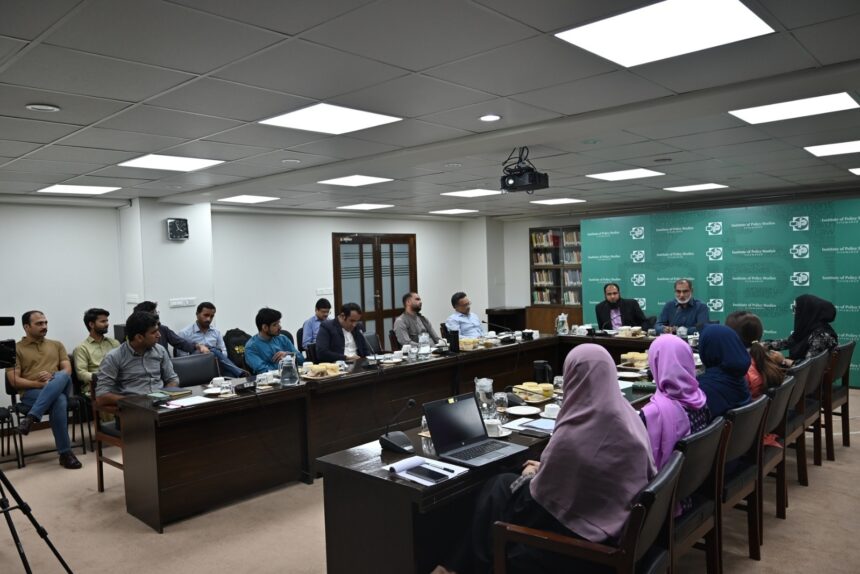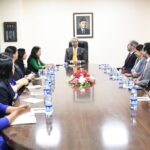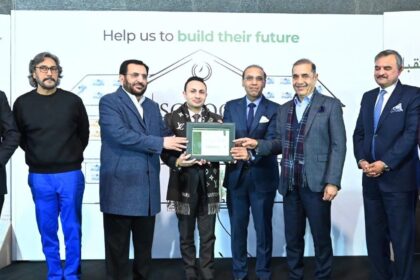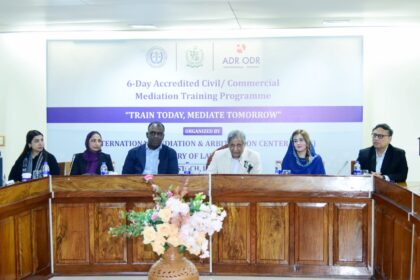Experts at a recent roundtable in Islamabad emphasized that integrated policies, local manufacturing, and robust infrastructure are essential for expanding the adoption of electric vehicles (EVs) in Pakistan. While new government policies offer significant incentives to boost EV uptake, factors such as limited consumer purchasing power, inadequate grid readiness, and a lack of charging, repair, and service facilities continue to hinder widespread adoption across the country.
At the session hosted by the Institute of Policy Studies, industry leaders and policymakers discussed the crucial role EVs could play in transitioning to low-carbon transport and meeting broader climate goals. However, they noted that achieving these outcomes will require not just policy incentives, but also the development of local manufacturing capabilities, investment in research and development, and extensive infrastructure to support charging and battery swapping.
Asim Ayaz from the Engineering Development Board outlined several initiatives the federal government has introduced since 2019, including sales tax exemptions and very low import duties on EVs, as well as EV bike distribution schemes aimed at increasing demand. Despite these efforts, Ayaz identified persistent challenges: the initial cost of two-wheeler EVs remains much higher than petrol alternatives, charging networks are sparse, and battery swapping options are nearly non-existent—all limiting the appeal and accessibility of EVs for ordinary consumers.
From the provincial perspective, Sulaiman Majeed of the Punjab Transport Authority highlighted that motorcycles represent 89 percent of registered vehicles in Punjab. To address pollution and congestion, the government is prioritizing developments like the Orange Line Metro, which serves around 200,000 passengers daily. Additional projects such as the Blue and Purple Line bus systems are underway in Lahore, Multan, and Faisalabad, with plans to deploy nearly 900 electric buses as part of the Punjab Clean Air Program.
In Balochistan, large-scale mass transit options are less practical due to geographic factors. Dr Faisal Ahmad Khan revealed that the provincial government is instead launching a smaller-scale pilot in Quetta’s downtown area, introducing a three-square-kilometer EV-based transit system via private investment, with the government providing parking and charging space.
Panelists flagged several technical and economic hurdles. Dr Usman Qadir of the Pakistan Institute of Development Economics stressed the need for local manufacturing and sustained research to make EVs a viable and lasting solution. He also questioned the appropriateness of public EV subsidies in a country where less than 10 percent of households own private vehicles.
Concerns were also raised regarding grid stability. Dr Muhammad Adil Khan warned of potential disruptions to electricity supply caused by concentrated EV charging, a point echoed by charging solutions specialist Mahrosh Fatima, who cited real cases of voltage fluctuations near charging stations in Islamabad. Other experts noted that most local power distribution companies are not yet equipped with guidelines for integrating EV infrastructure. Afzaal Khan highlighted the complete absence of repair and maintenance facilities for EVs in current policy plans, while climate expert Asad Mehmood urged policymakers to research alternative technologies, such as hydrogen and new battery chemistries, alongside EVs.
Summing up the discussion, Mirza Hamid Hassan and Khalid Rahman called for a focus on local manufacturing to drive down costs and warned of possible government revenue losses as the market moves away from gasoline vehicles. They advocated for incentives and strategies that are relevant to the purchasing power and needs of everyday consumers, insisting that a holistic approach is needed to tackle the intertwined technical, financial, and operational challenges of EV adoption in Pakistan.











